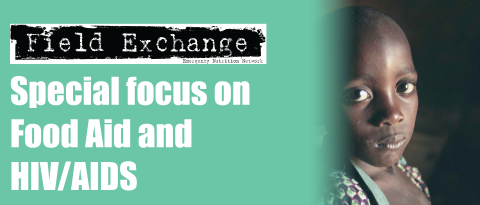South Africa HIV/AIDS Pandemic
By Mary Corbett
Mary Corbett is a food security and nutrition consultant who visited the region on behalf of ENN in early 2005.
This viewpoint is based on a series of meetings with key stakeholders in South Africa during Mary Corbett's field trip earlier this year.
As the HIV/Aids pandemic continues in the Horn and Southern Africa, the prevalence rates vary from place to place but the impact can be felt across the region. Although countries with small populations such as Swaziland and Lesotho are highlighted due to their high prevalence rates, countries like South Africa, with somewhat lower prevalence rates but a far higher population size, have far greater physical numbers of people living with HIV/AIDS - estimated at 5.9 million people infected.
The situation in South Africa is complex. It is a country with huge disparities of wealth. Although placed in the upper half of UNDP's Human Poverty and Development Index, over 50% of the population live below the poverty line. The country has a two-tier health system with highly sophisticated hospitals and clinics in the cities but poorly resourced primary health care in remote rural areas.
Work on Nutrition and HIV/AIDS
Prior to 1994, nutrition activities in South Africa were fragmented. However since 1994, the Ministry of Health (MOH) has been involved in developing an integrated nutrition programme, whose main strategies include:
- Micro-nutrient Malnutrition Control
- Food Service Management
- Contribution to household food security
- Disease specific nutrition support, treatment and counselling
- Growth monitoring and promotion
- Nutrition promotion, education and advocacy
- Promotion, protection and support of breastfeeding
The development and implementation of the strategy has been a multi-sectoral approach involving other ministries, such as such as the Ministry of Agriculture and Ministry of Education.
In April 2004, the South Africa National Guidelines on Nutrition for people living with HIV/AIDS were completed. These guidelines are clear and easy to understand. The main emphasis is on maintaining a well balanced diet to maintain weight and keep healthy for as long as possible. Tips and suggestions are given on how to deal nutritionally with complications such as diarrhoea, nausea, vomiting, and mouth ulcers.
Although nutrition has been identified as a key element in the support to PLWHA, it remains difficult to address this area as there are many unanswered questions including:
- What vitamin/mineral supplements to administer
- Which patients to give supplements to, and for how long
- Whether to give multivitamins as a blanket approach
- What is the impact of social services supplied food baskets and what should be included in the basket
While there are many mechanisms in place to support PLWHA, there remains awareness that more research is needed into areas around optimal nutrition requirements.
Disparities in need
On the one hand, there is great interest in food supplementation and optimum multivitamin supplementation in South Africa. However, in a country where half of the population is below the poverty line, household food security and well-balanced nutritious meals are often not an option. Access to the basics such as clean drinking water, health care facilities and education remain out of reach for many. HIV/AIDS prevalence rates also vary considerably, in some ante-natal clinics, ranging from 27.9% to 50% within the same area. The impact of these high rates on the community is tremendous, with vast populations faced with insufficient daily food intake.
The MOH in South Africa is striving to address the HIV/AIDS pandemic. Antiretroviral drugs (ARVs) are available free of charge in public hospitals and service points have been identified in each district to support ARV uptake. However, to date, the uptake has been surprisingly low. Although it was planned to have 50,000 people on ARVs by April 2005, by the beginning of 2005 this has only reached 15,000, despite an anticipated "rush to get free ARVs". It is unclear why uptake is so low in the face of substantial media coverage, however stigma around HIV/AIDS remains a major issue in South Africa.
In spite of the considerable progress made to improve health care and nutrition support overall in South Africa, HIV/AIDS has led to a substantial deterioration in health indicators, such as infant and child mortality, over the last number of years. The most recent mortality figures (unpublished) indicate a serious increase, which is largely being attributed to the high incidence of HIV/AIDS. It looks like the challenging, and perhaps unique, context of the country, with varying and substantial needs of vast sectors of the population, may well be limiting the impact of mainstream developments in managing HIV/AIDS.
For further information, contact Mary Corbett, email: corbettmary@eircom.net
Imported from FEX website


